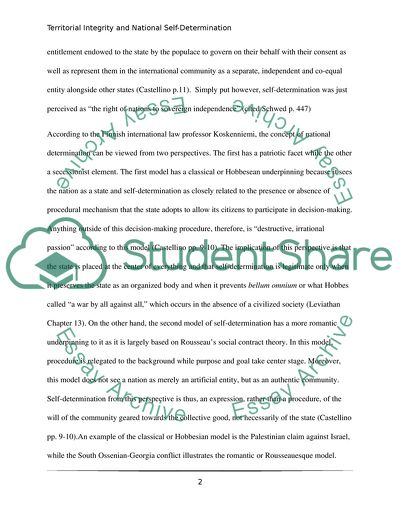Cite this document
(The Conflict between Territorial Integrity and Self-Determination Essay Example | Topics and Well Written Essays - 2000 words, n.d.)
The Conflict between Territorial Integrity and Self-Determination Essay Example | Topics and Well Written Essays - 2000 words. https://studentshare.org/social-science/1757936-why-is-there-a-tension-between-territorial-sovereignty-and-national-self-determination-how-can-that-tension-be-moderated-in-the-twenty-first-century
The Conflict between Territorial Integrity and Self-Determination Essay Example | Topics and Well Written Essays - 2000 words. https://studentshare.org/social-science/1757936-why-is-there-a-tension-between-territorial-sovereignty-and-national-self-determination-how-can-that-tension-be-moderated-in-the-twenty-first-century
(The Conflict Between Territorial Integrity and Self-Determination Essay Example | Topics and Well Written Essays - 2000 Words)
The Conflict Between Territorial Integrity and Self-Determination Essay Example | Topics and Well Written Essays - 2000 Words. https://studentshare.org/social-science/1757936-why-is-there-a-tension-between-territorial-sovereignty-and-national-self-determination-how-can-that-tension-be-moderated-in-the-twenty-first-century.
The Conflict Between Territorial Integrity and Self-Determination Essay Example | Topics and Well Written Essays - 2000 Words. https://studentshare.org/social-science/1757936-why-is-there-a-tension-between-territorial-sovereignty-and-national-self-determination-how-can-that-tension-be-moderated-in-the-twenty-first-century.
“The Conflict Between Territorial Integrity and Self-Determination Essay Example | Topics and Well Written Essays - 2000 Words”. https://studentshare.org/social-science/1757936-why-is-there-a-tension-between-territorial-sovereignty-and-national-self-determination-how-can-that-tension-be-moderated-in-the-twenty-first-century.


